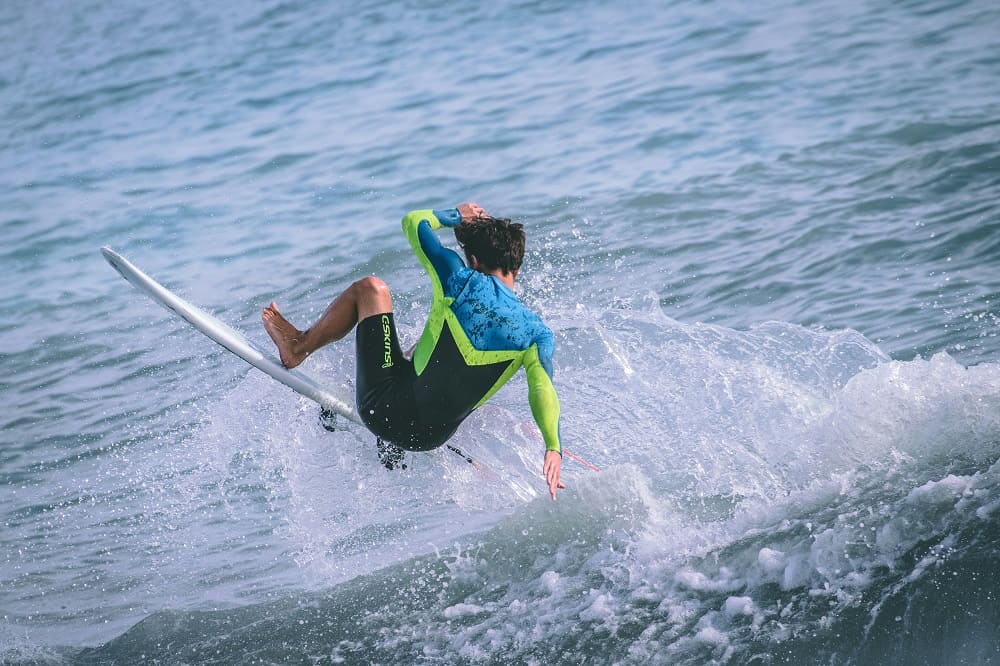Surfing is not only a sport but a way of life for many enthusiasts around the world. It requires a unique combination of skill, balance, and physical fitness. While the allure of catching the perfect wave is undeniable, achieving peak performance in surfing requires more than just time in the water. It demands a dedicated approach to fitness, focusing on strength, endurance, flexibility, and mental acuity.
Importance of Strength and Endurance in Surfing
Why Strength Matters
Strength is essential for paddling out to the lineup, maneuvering the board, and riding waves effectively. Without adequate strength, surfers may struggle to paddle through strong currents or execute powerful turns.
The Role of Endurance
Endurance is equally crucial, especially during long surfing sessions or when facing challenging conditions. Endurance enables surfers to maintain their performance throughout extended sessions without succumbing to fatigue.
Key Muscle Groups Used in Surfing
Core Muscles
The core muscles play a central role in surfing, providing stability and power for movements both on and off the board. Strong core muscles improve balance and agility, essential for riding waves with finesse.
Upper Body Muscles
Surfing heavily relies on upper body strength, particularly in the shoulders, back, and arms. These muscles are engaged during paddling, duck diving, and maneuvering the board.
Lower Body Muscles
While the lower body may not seem as crucial in surfing, strong legs are essential for maintaining balance, stability, and generating power during turns and maneuvers.
Specific Exercises for Surfing Fitness
Core Strengthening Exercises:
- Planks.
- Twists.
- Bicycle Crunches.
Upper Body Strength Exercises
- Push-Ups.
- Pull-Ups.
- Shoulder Presses.
Lower Body Endurance Exercises
- Squats.
- Lunges.
- Calf Raises.
Yoga and Flexibility for Surfing
Importance of Flexibility
Flexibility is vital for surfers to perform dynamic movements with ease and reduce the risk of injury. Yoga provides an excellent way to improve flexibility while also enhancing balance and mental focus.
Yoga Poses for Surfers
- Downward-Facing Dog.
- Warrior Poses.
- Cobra Pose.
Cardiovascular Training for Surfing
HIIT Workouts
High-Intensity Interval Training (HIIT) is an effective way to improve cardiovascular fitness, simulating the bursts of energy required during surfing sessions.
Swimming
Swimming is an excellent cross-training activity for surfers, as it targets the same muscle groups used in paddling while also improving overall endurance.
Balancing and Stability Training
Importance of Balance
Balance is paramount in surfing, as even the slightest shift in weight can affect board control. Balancing exercises help surfers develop stability and proprioception.
Exercises to Improve Balance
- Bosu Ball Squats.
- Single-Leg Deadlifts.
- Stability Ball Rollouts.
Nutrition Tips for Surfers
Importance of Proper Nutrition
Proper nutrition is essential for fueling performance and promoting recovery. Surfers should focus on consuming a balanced diet rich in lean proteins, complex carbohydrates, healthy fats, and hydration.
Foods to Fuel Performance
- Lean proteins like chicken, fish, and tofu.
- Complex carbohydrates such as whole grains, fruits, and vegetables.
- Healthy fats from nuts, seeds, and avocado.
Recovery and Rest
Importance of Recovery
Recovery is crucial for muscle repair and growth, as well as preventing burnout and overtraining. Adequate rest allows the body to recover fully between surfing sessions.
Tips for Rest and Regeneration
- Get plenty of sleep.
- Incorporate active recovery activities like stretching or gentle yoga.
- Listen to your body and take rest days when needed.
Mental Fitness for Surfing
Overcoming Fear
Surfing can be intimidating, especially for beginners facing large waves or crowded lineups. Developing mental resilience and techniques for managing fear is essential for progressing as a surfer.
Visualization Techniques
Visualization is a powerful tool for improving performance and building confidence. Surfers can visualize themselves successfully riding waves, helping to reinforce positive outcomes and reduce anxiety.
Safety Precautions for Surfing Fitness
Importance of Safety
Safety should always be a top priority when engaging in surfing activities. Being aware of potential hazards and knowing how to respond in emergencies can prevent accidents and injuries.
Injury Prevention Strategies
- Warm-up properly before surfing.
- Use proper technique when paddling and maneuvering the board.
- Wear appropriate safety gear, including a leash and rash guard.
Conclusion
Achieving peak fitness for surfing requires a holistic approach that addresses strength, endurance, flexibility, and mental acuity. By incorporating targeted exercises, proper nutrition, and safety precautions, surfers can enhance their performance and enjoyment of the sport while reducing the risk of injury.
FAQs
Aim to incorporate surfing-specific exercises into your fitness routine at least 2-3 times per week, with additional cross-training activities like swimming or yoga as desired.
Yes, strength training is essential for surfing as it helps improve paddling power, board control, and overall performance in the water.
Absolutely! Yoga not only enhances flexibility and balance but also promotes mental focus and relaxation, all of which are beneficial for surfing.
Opt for easily digestible, energy-rich foods like bananas, oatmeal, or whole grain toast with nut butter to fuel your body before hitting the waves.
Maintain situational awareness, communicate with other surfers, and practice proper etiquette to avoid collisions and ensure a safe and enjoyable surfing experience.

Luca is a professional surfer with a passion for riding waves. He’s spent years perfecting his technique and exploring the world’s best surf spots. When he’s not out on the water, Luca enjoys sharing his surfing insights and experiences through blog.

